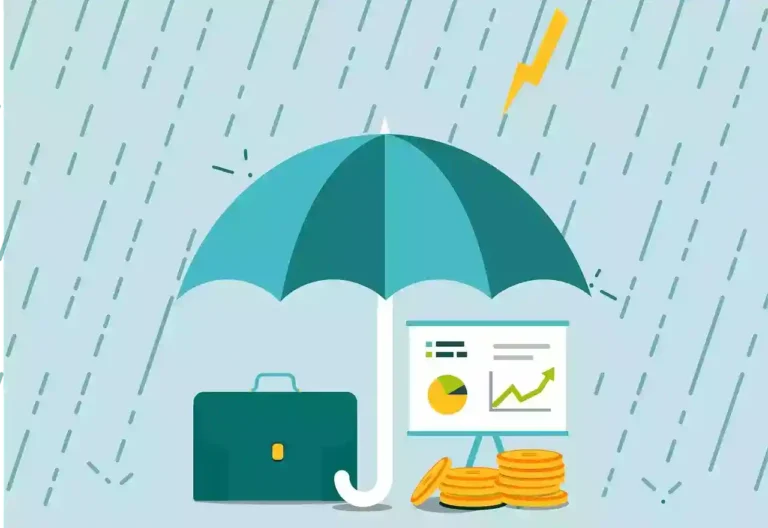At some point in life, unexpected financial emergencies can arise, making it crucial to have a safety net in the form of emergency savings. Whether it’s an unforeseen medical bill, car repair, or sudden job loss, having a financial cushion can make all the difference. In this blog post, we will explore the importance of saving money for rainy days and provide valuable tips on building emergency savings. By the end, you’ll be equipped with the knowledge to proactively protect your financial well-being and confidently navigate through unexpected circumstances.
Why Building Emergency Savings is Important
Life is full of uncertainties, and we never know when an unexpected expense might arise. Building emergency savings is vital for several reasons:
- Financial Security: Having a dedicated emergency fund provides a sense of security and peace of mind, knowing that you are prepared for unforeseen circumstances.
- Avoiding Debt: Without emergency savings, people often resort to credit cards or loans when hit with unexpected expenses, leading to debt accumulation and financial stress.
- Flexibility: Building an emergency fund allows you to handle emergencies without relying on others or disturbing your long-term savings or investments.
- Reduced Stress: A financial safety net alleviates stress associated with unexpected financial burdens, allowing you to focus on finding solutions instead of worrying about money.
Tips for Saving Money for Rainy Seasons
Rainy seasons often bring additional expenses, such as home repairs, increased utility bills, or weather-related emergencies. Here are some practical tips to save money during rainy seasons:
- Inspect and Maintain Your Home: Perform regular maintenance checks to identify and fix potential issues before they become major problems. By promptly addressing small repairs, you can prevent larger expenses later on.
- Conserve Energy: Use energy-saving techniques to reduce electricity consumption and lower your bills. Some examples include turning off unused lights and appliances, using energy-efficient light bulbs, and properly insulating your home.
- Collect Rainwater: Installing rain barrels or other rainwater collection systems can help you save on water bills, especially during the rainy season. Utilize this collected water for tasks like watering plants or cleaning.
- Stock Up on Essentials: Take advantage of sales or discounts on non-perishable items commonly used during rainy seasons, such as batteries, flashlights, umbrellas, and rain gear. This way, you’ll be prepared without paying a premium during emergencies.
- Plan Indoor Activities: When outdoor activities are limited due to bad weather, plan indoor activities that are budget-friendly, such as movie nights at home, board games, or cooking together as a family.
How Much Should You Save?
The ideal amount to save for a rainy day fund varies depending on your individual circumstances. However, a good rule of thumb is to aim for 3-6 months of your living expenses. This will provide you with enough cushion to cover essential costs while you get back on your feet.
How to Save Money for Unexpected Expenses
Set Realistic Saving Goals
Setting realistic saving goals is essential to make steady progress in building your emergency savings fund. Consider your current income, expenses, and any outstanding debts when establishing these goals. Start by aiming to save a specific amount each month or paycheck, gradually increasing the target as you become more comfortable with saving.
Track Your Expenses
Keeping track of your expenses is a crucial step towards saving money. Use online budgeting tools, mobile apps, or simple spreadsheets to identify where your money is going. Categorize your expenses into essential and non-essential categories to help identify areas where you can cut back and save. Here are a few popular and highly rated online expense tracking websites: Mint, YNAB (You Need a Budget), etc.
Create a Budget
After tracking your expenses, create a comprehensive budget that aligns with your savings goals. Allocate funds for necessities such as housing, transportation, utilities, and groceries. Additionally, set aside a specific amount for discretionary spending, ensuring you leave room for entertainment and leisure activities without compromising your savings.
Reduce Unnecessary Spending
Evaluate your spending habits and identify areas where you can cut back. Consider different ways to save money without sacrificing enjoyment, such as dining out less frequently, brewing coffee at home, or utilizing public transportation instead of driving.
Automate Your Savings
Take advantage of automation tools offered by banks and financial institutions. Set up automatic transfers from your checking account to a separate savings account designated for emergencies. By automating your savings, you remove the temptation to spend the money elsewhere and ensure consistent contributions to your emergency fund.
Explore Additional Income Sources
If your current income is not sufficient to meet your saving goals, consider exploring additional income sources. This could involve taking on a side job, freelancing, or monetizing a hobby. Generating extra income can significantly expedite your savings journey and strengthen your emergency fund.
The Benefits of Having an Emergency Savings Fund
In addition to providing financial security, having an emergency savings fund offers various benefits:
- Reduced Stress: Knowing you have funds set aside for emergencies reduces anxiety and stress during challenging times.
- Avoiding Debt: With emergency savings, you won’t need to rely on credit cards or loans to cover unexpected expenses, helping you avoid debt and its associated costs.
- Quick Response: An emergency fund allows you to respond promptly to unexpected events, such as car repairs or medical emergencies, without delays or financial burden.
- Financial Independence: By having a safety net, you become less dependent on friends, family, or loans during emergencies, enabling you to maintain your financial independence.
- Opportunities and Investments: When you have emergency savings, you open up opportunities for favorable investments or taking advantage of unexpected opportunities that may arise.
Remember:
- Your emergency fund is not meant for everyday expenses. Only use it for unexpected costs that you cannot afford to cover with your regular income.
- Regularly review and adjust your emergency fund goal as your income and expenses change.
- Building a rainy day fund takes time and discipline, but it’s an investment in your financial security. Every rupee saved brings you closer to peace of mind and financial stability.
Conclusion on Saving Money for Rainy Days
Building emergency savings is a crucial step towards achieving financial stability and peace of mind. By following the tips provided, you can save money for rainy days and prepare for unexpected expenses. Remember to set realistic saving goals, track your expenses, create a budget, reduce unnecessary spending, automate your savings, and explore additional income sources. Having an emergency fund not only protects you from financial hardships but also empowers you to seize opportunities and maintain your financial independence. Start saving today to secure a brighter future.
FAQs
How much money should I save for emergencies?
Financial experts recommend having at least three to six months’ worth of living expenses saved for emergencies. This amount can vary depending on your individual circumstances, such as your job security and the stability of your income.
What are some tips for cutting expenses and saving money?
There are many ways to cut expenses and save money, such as creating a budget, reducing unnecessary spending, negotiating bills, and finding ways to earn extra income. You can also try using cashback apps, buying generic brands, and shopping for deals and discounts.
Why is saving money for rainy days important?
Saving money for rainy days is crucial because unforeseen expenses or emergencies can arise at any time. Having a financial safety net ensures that you can navigate through challenging situations without compromising your financial stability.
Can I use a regular savings account for my rainy day fund?
While a regular savings account is a good start, consider using a high-yield savings account or a money market account to maximize your returns. These accounts often offer better interest rates, helping your money grow more effectively over time.
What qualifies as a “rainy day” expense?
Rainy day expenses include unexpected events such as medical emergencies, car repairs, or home maintenance issues. Essentially, any unforeseen cost that is not part of your regular budget can be considered a rainy day expense.
Is it advisable to invest my rainy day fund?
It’s generally recommended to keep your rainy day fund in liquid and low-risk assets, such as a savings account or a short-term CD. Investments carry inherent risks, and you want your rainy day fund to be easily accessible in times of need without the risk of significant losses.
How often should I reassess and adjust my rainy day fund?
Regularly reassess your rainy day fund whenever there are significant changes in your financial situation, such as a new job, increased expenses, or major life events. It’s important to ensure that your savings align with your current needs and circumstances.
Can I start saving for rainy days if I have limited income?
Absolutely. Start small and focus on building a habit of saving. Even a small amount consistently set aside each month can accumulate over time. Look for creative ways to cut expenses and explore opportunities to increase your income gradually.

